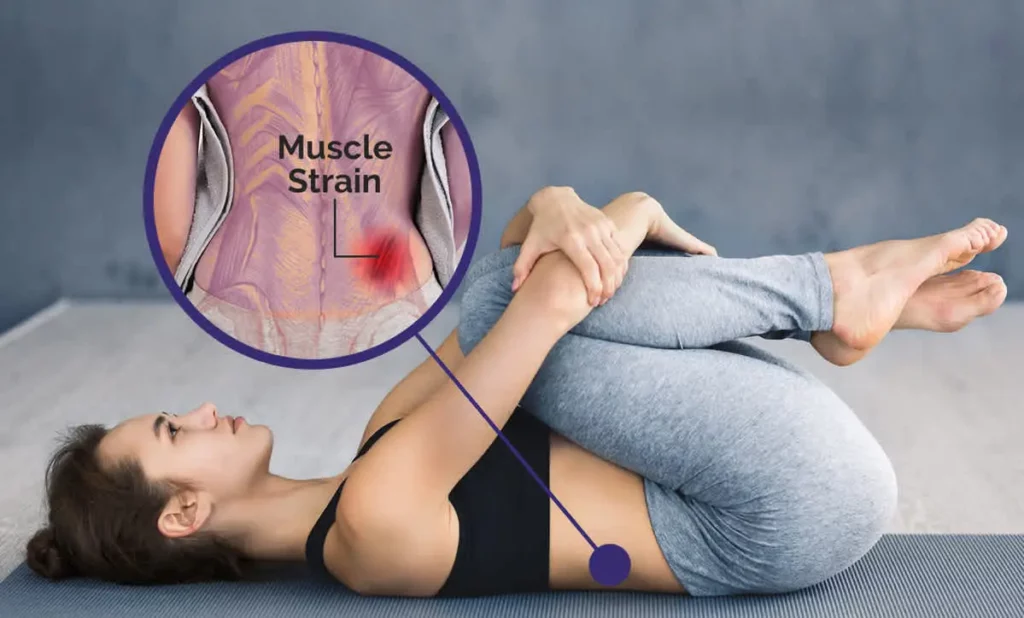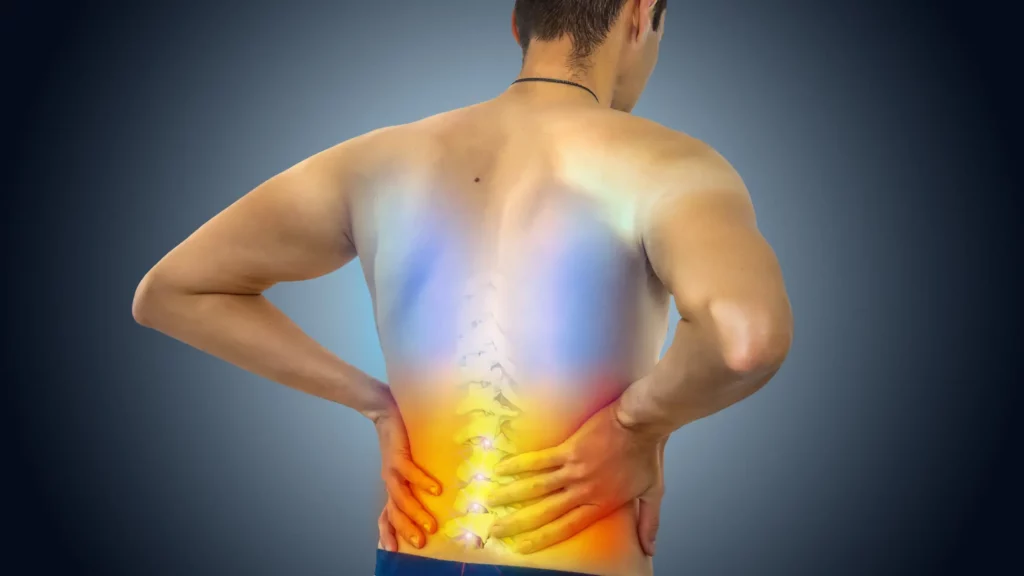Lower back spasms can strike without warning, turning a regular day into a painful struggle. Imagine bending down to pick up your morning newspaper and feeling a sudden, sharp pain in your lower back that freezes you in place. Whether you’ve experienced this sensation or are living in fear of that unexpected twinge, understanding lower back spasms is the key to prevention and relief. In this comprehensive guide, we’ll explore what causes these spasms, how to recognize them, and most importantly, the effective methods to alleviate and prevent them. So, read on to reclaim control over your back and your life!
Contents
Understanding Lower Back Spasm
 Lower back spasms can be a sudden and painful experience that many individuals encounter at some point in their lives. But what exactly is a lower back spasm, and what triggers this discomforting sensation? Let’s break it down into simpler terms:
Lower back spasms can be a sudden and painful experience that many individuals encounter at some point in their lives. But what exactly is a lower back spasm, and what triggers this discomforting sensation? Let’s break it down into simpler terms:
What is a Lower Back Spasm? A lower back spasm is an involuntary contraction or tightening of the muscles in the lower back. It can feel like a sharp, sudden pain or a persistent ache, and it might make a movement or even standing up straight challenging.
Symptoms to Watch For:
- Sudden pain or ache in the lower back
- Stiffness or difficulty in moving the back
- Persistent discomfort that might radiate to other areas
Understanding lower back spasms involves recognizing both the triggers and symptoms. Awareness of these factors can help in early detection and proper management, whether through self-care or professional medical assistance. If you experience persistent or severe spasms, consulting a healthcare provider is always the wisest course of action.
What Are The Causes Of Spasms?
 Lower back spasms can be both painful and perplexing, often occurring without warning. Understanding the root causes can help you take steps to avoid them in the future. Here are some of the common culprits:
Lower back spasms can be both painful and perplexing, often occurring without warning. Understanding the root causes can help you take steps to avoid them in the future. Here are some of the common culprits:
- Muscle Strain: Overexerting the muscles in the lower back, whether through heavy lifting or sudden movements, can lead to spasms.
- Nerve Compression: If nerves in the lower back become pinched or compressed, spasms may result.
- Underlying Medical Conditions: Chronic health issues such as arthritis, osteoporosis, or spinal stenosis can cause recurring spasms in the lower back.
- Dehydration: Lack of proper hydration can lead to muscle cramping, including spasms in the back.
- Electrolyte Imbalance: An imbalance in essential electrolytes like potassium and calcium can affect muscle function, leading to spasms.
- Poor Posture: Sitting or standing in awkward positions for prolonged periods can put undue strain on the back muscles, triggering spasms.
Understanding these triggers can empower you to make lifestyle changes and seek appropriate medical care to minimize the risk of lower back spasms. Whether it’s improving your posture, staying hydrated, or seeking professional guidance for underlying health issues, recognizing the causes can be the first step towards relief.
Diagnosis: How Lower Back Spasms Are Identified?
Lower back spasms can be a perplexing and painful condition, often requiring a professional medical evaluation to pinpoint the underlying cause. If you find yourself suffering from recurring spasms, here’s what you might expect during a diagnostic process:
- Physical Examination: A healthcare provider will likely start with a thorough physical examination, assessing the area of discomfort, your range of motion, and any potential weaknesses or abnormalities in the muscles.
- Medical History Review: Understanding your past medical history, including previous injuries or chronic conditions, can provide valuable insights into what might be triggering the spasms.
- Imaging Techniques: Depending on the initial findings, your healthcare provider may recommend imaging tests such as X-rays, MRI, or CT scans. These tools allow for a detailed view of the spine and surrounding tissues, helping to identify issues like nerve compression or disc degeneration.
- Nerve Studies: In some cases, nerve conduction studies might be conducted to assess the function of nerves in the lower back. This can help in diagnosing conditions that might be causing spasms, such as neuropathy.
- Personal Lifestyle and Activity Assessment: Your healthcare provider might ask about your daily activities, exercise habits, and general lifestyle to identify any contributing factors like poor posture or overexertion.
The diagnostic process is tailored to the individual and might include various combinations of the above techniques. Understanding what’s causing the spasms is crucial for developing an effective treatment plan, so don’t hesitate to ask questions or provide additional information during your medical evaluation.
Home Remedies and Exercises for Immediate Relief

Lower back spasms can strike at the most inopportune times, often when a healthcare professional isn’t immediately available. In such instances, having a few home remedies and exercises at your disposal can offer some much-needed relief:
Heat/Cold Therapy
Alternating between a hot and cold pack can alleviate pain and reduce muscle inflammation. Cold therapy helps to numb the area and decrease swelling, while heat therapy promotes blood flow and relaxation of the muscles.
Over-the-Counter Medication
Non-prescription anti-inflammatory drugs like ibuprofen can help reduce inflammation and relieve pain. Always follow the recommended dosage instructions and consult a healthcare provider if symptoms persist.
Gentle Stretches
Specific lower back stretches can help to ease muscle tension. Remember, the goal is to feel a gentle stretch, not pain. If a particular stretch causes discomfort, stop and try a different one.
- Child’s Pose: Begin on all fours, then sit back on your heels while reaching your arms forward. Hold for 30 seconds and repeat.
- Knee-to-Chest Stretch: Lie on your back with knees bent and feet flat on the floor. Bring one knee up to your chest, holding the stretch for up to 30 seconds. Switch and repeat with the other knee.
Stay Hydrated
Dehydration can cause muscles to cramp or spasm, so drink plenty of water, especially if you’ve been active or if the weather is hot.
Rest
Sometimes, your body just needs a break. Listen to what it’s telling you and take some time to relax. However, avoid extended periods of bed rest as it can exacerbate symptoms.
While these home remedies can offer immediate relief, they should not replace a comprehensive treatment plan prescribed by a healthcare provider. If your spasms are severe or persistent, it’s important to seek professional medical help.
Professional Treatment Options for Lower Back Spasms
 While home remedies can be effective for minor or isolated incidents of lower back spasms, more severe or chronic spasms often necessitate professional treatment. Here are a few medical interventions that can be used to treat lower back spasms:
While home remedies can be effective for minor or isolated incidents of lower back spasms, more severe or chronic spasms often necessitate professional treatment. Here are a few medical interventions that can be used to treat lower back spasms:
- Physical Therapy: A physical therapist can guide you through a series of exercises and stretches designed to strengthen your back muscles, improve your flexibility, and reduce the likelihood of future spasms. In addition to exercise, physical therapists may also use techniques such as massage, heat or cold therapy, and even acupuncture to help manage your symptoms.
- Prescription Medications: In cases where over-the-counter medications aren’t effective, a doctor might prescribe stronger anti-inflammatory drugs, muscle relaxants, or painkillers. It’s important to use these medications as directed, and to communicate with your doctor about any side effects you may experience.
- Surgery: In rare cases where lower back spasms are caused by an underlying issue such as a herniated disc or spinal stenosis, surgical intervention may be required. This is typically considered as a last resort when other treatments haven’t been effective and the cause of the spasms has been clearly identified.
Remember, it’s essential to consult with a healthcare professional if you’re dealing with persistent or severe lower back spasms. They can diagnose the underlying cause of your spasms, guide you on the most appropriate treatment options, and help you develop a plan to prevent future episodes.
How To Avoid Future Spasms?
 Prevention is the most effective medicine when it comes to lower back spasms. By making a few adjustments to your daily routine and lifestyle, you can significantly reduce your risk of experiencing future episodes. Here are some preventative measures you can take:
Prevention is the most effective medicine when it comes to lower back spasms. By making a few adjustments to your daily routine and lifestyle, you can significantly reduce your risk of experiencing future episodes. Here are some preventative measures you can take:
- Maintain Good Posture: Good posture isn’t just about standing tall. It’s about ensuring your body is properly aligned whether you’re sitting, standing, or even sleeping. If you spend long hours sitting, consider investing in an ergonomic chair or stand-up desk. Try to avoid slouching and take regular breaks to move around.
- Stay Active: Regular physical activity helps to strengthen your back muscles and enhance flexibility. This can significantly reduce the likelihood of experiencing muscle strains and spasms. Opt for low-impact activities such as walking, swimming, or yoga, especially if you’re new to exercise.
- Mind Your Lifting Technique: If your work or daily activities involve lifting heavy objects, be mindful of your technique. Always bend at the knees, not the waist, and try not to twist your body while lifting. It’s better to ask for help than to risk injuring your back.
- Eat a Balanced Diet: Consuming a diet rich in calcium and vitamin D can contribute to better bone health, reducing the chances of experiencing back problems.
- Manage Stress: Mental stress can often translate into physical tension, including in your back muscles. Developing stress management strategies such as deep breathing exercises, yoga, or mindfulness can help relax your muscles and prevent spasms.
Remember, while these strategies can help prevent future lower back spasms, they are not foolproof.
Conclusion
Lower back spasms can be a crippling experience, hindering your everyday activities and affecting your overall quality of life. But remember, you don’t have to live with the pain. With a better understanding of your condition, along with appropriate home remedies, exercises, and professional treatment options, you can regain control and begin your journey towards relief and recovery.
If you’re experiencing persistent or severe lower back spasms, don’t hesitate to seek professional help. At PhysioMantra, we have a team of experienced therapists who specialize in addressing issues like yours. Our online physical therapy sessions are designed to cater to your specific needs and can help you manage your symptoms more effectively. Book a trial session today and take the first step towards a pain-free life.



